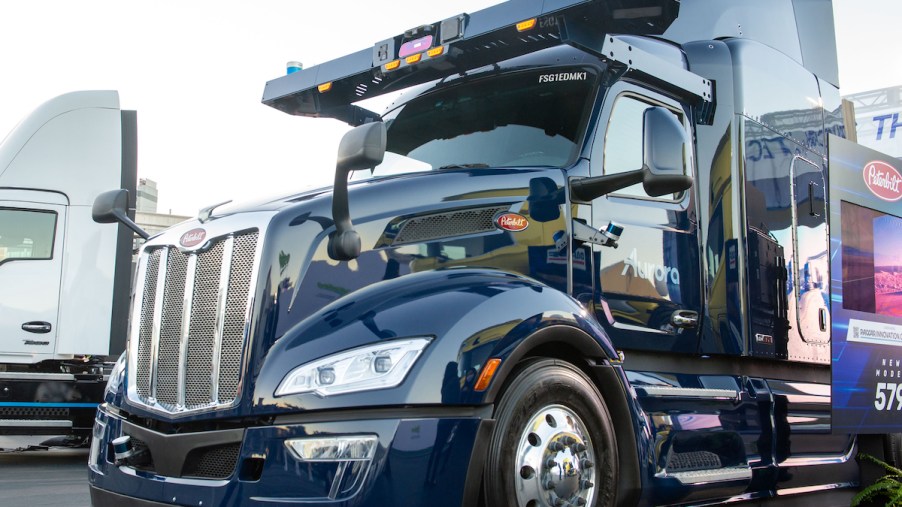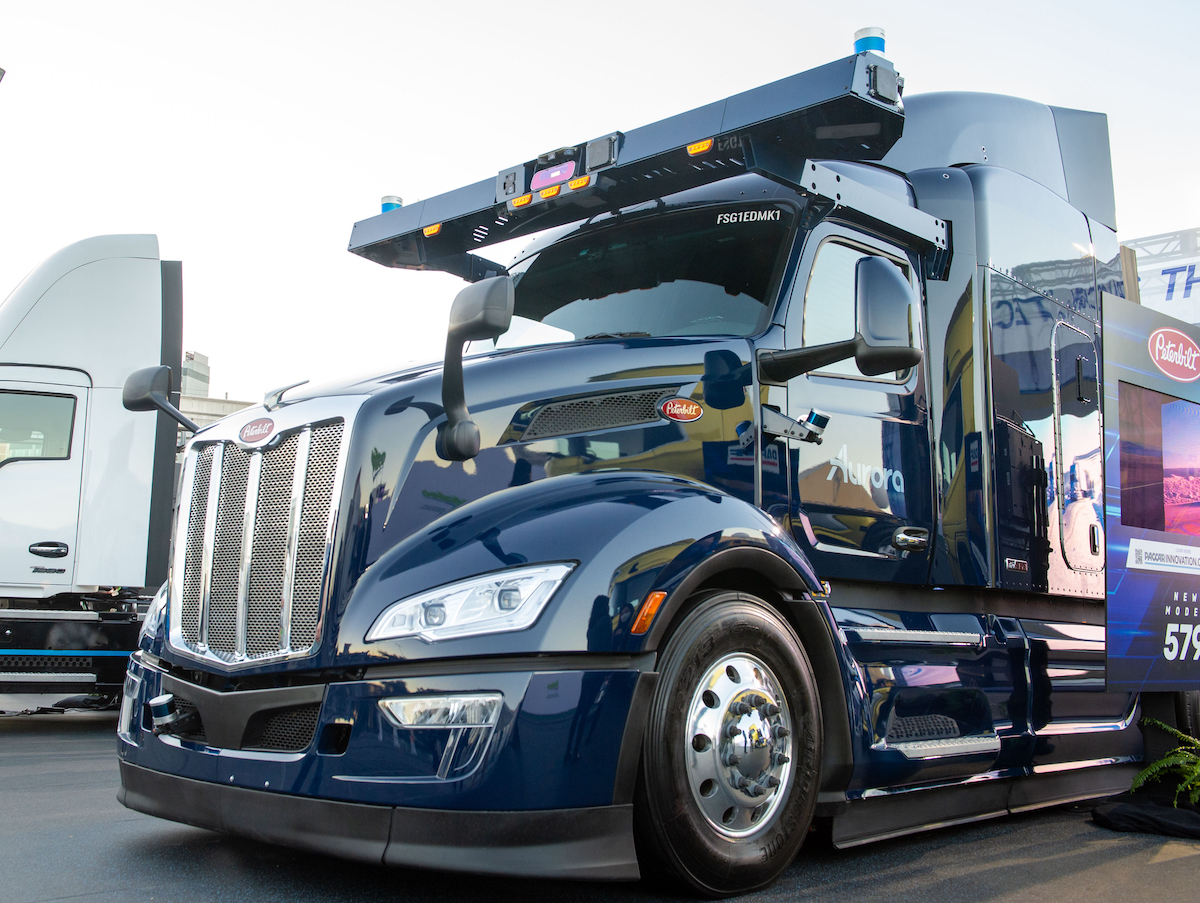
What Happens When a Driverless Semi-Truck Gets a Blowout
When the pandemic started, companies needed more delivery trucks to handle consumers’ panic buying. The surge in online shopping only increased this demand. Though consumer shopping habits are slowly returning to the way they were pre-coronavirus, many truckers have been overworked to the point of quitting their jobs. To combat the driver shortage, some trucking companies have set their sights on driverless semi-trucks.
These autonomous vehicles can work long hours without breaks, but truck manufacturers still need to address safety concerns. For instance, what happens when a driverless rig has a blowout?
Why are driverless semi-trucks a thing now?

EVs in general have gained explosive popularity in the past few years. Remember when your only option was a Nissan Leaf? Now you can get electric versions of many popular models, including the Ford F-150 Lightning and Mercedes-EQ EQS.
EV technology has also developed at a rapid pace, so we can enjoy these vehicles for performance as well as efficiency. The Tesla Model S Plaid is currently the fastest production car ever made, claiming to reach 60 mph in under two seconds.
But what’s more beneficial to trucking companies is the sophisticated sensors that EVs (and even gas-operated cars) use. Cars with level 2 autonomy use a system of LiDAR (or radar) and cameras in their cruise control systems.
The driver still has to be present behind the wheel, but it’s far less demanding physically. Truckers have to stay in their trucks for hours at a time, sometimes half a day. Imagine having to constantly apply pressure to the gas pedal and make passing maneuvers throughout the day with only small breaks. Even if they still had to stay inside the cab, freeing truckers of that obligation would be a huge relief to many.
Introducing the fallback system
Some companies have already begun conducting supervised test drives with autonomous semi-trucks. A trucker must be behind the wheel at all times, but the rigs can drive for long stretches without human assistance. The trucker is there only to intervene in emergencies, such as a flat tire or mechanical failure.
However, CDL Life reports that Kodiak Robotics Inc. has a solution to this problem. A new fallback system called the Kodiak Driver reportedly runs system diagnostics 10 times in a single second. It constantly monitors the engine’s operations, tire pressure, oil levels, and battery life.
If any component needs an immediate tune-up, the fallback system activates. The truck will pull itself over at the nearest and safest opportunity to wait for human assistance.
The fallback system can also run performance checks on the truck’s autonomous components. If even one small sensor fails, it can increase the risk of accidents because the vehicle can’t make the best-informed decisions. These highly sensitive sensors can easily become damaged if hit with a pebble or other flying debris.
Such an event would immediately trigger the fallback system. Because it allows the truck to react quickly to potential problems, this system also protects any human occupants.
Driverless semi-trucks that will benefit from the fallback system
Some driverless box trucks, such as Walmart’s rigs provided by Gatik, have already been in use for several months. There are only two of them for now, and the routes they take are reportedly short. However, this could change with advanced (and readily available) safety technology.
Tesla is also developing an autonomous semi-truck, though the company is experiencing extreme delays thanks to the chip shortage. Still, there’s a good chance the competing Chinese Homtruck might come to America to take the Tesla Semi’s place. If it’s successful, the Kodiak Driver would likely be implemented in these autonomous trucks (and more) across the nation.


